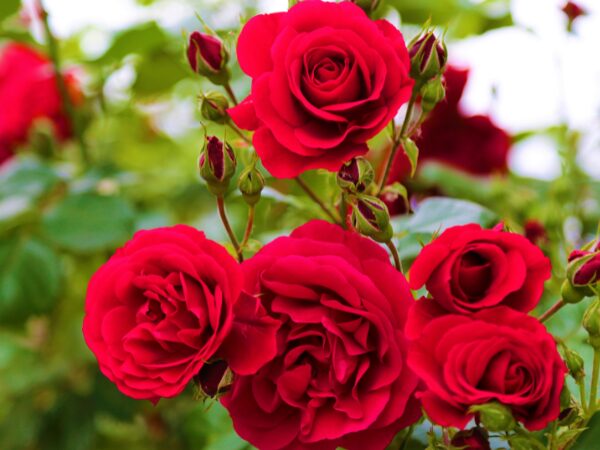
Types of Roses and their Uses
Do you ever feel overwhelmed by the number of roses available to choose from? I sure do! When the long anticipated spring season finally begins and the huge shipment of roses finally arrives at Canadale I am awed and a little dizzy at all the choices before me. The section below will describe the different types of roses we carry and what they are generally used for. However, when choosing roses for your garden here are a few key things that can be helpful: before you browse the rose section, have at least a vague idea of where your roses will go and what you will use them for, whether it be for a hedge or a showy specimen; have a general idea of what colour you roses you’d like to have in your garden; read the tag – there is usually a multitude of helpful information on the tags and signs provided; and remember that the employees here at Canadale will be more than happy to help you pick out the most suitable roses for your purposes and answer any questions you have about growing roses.
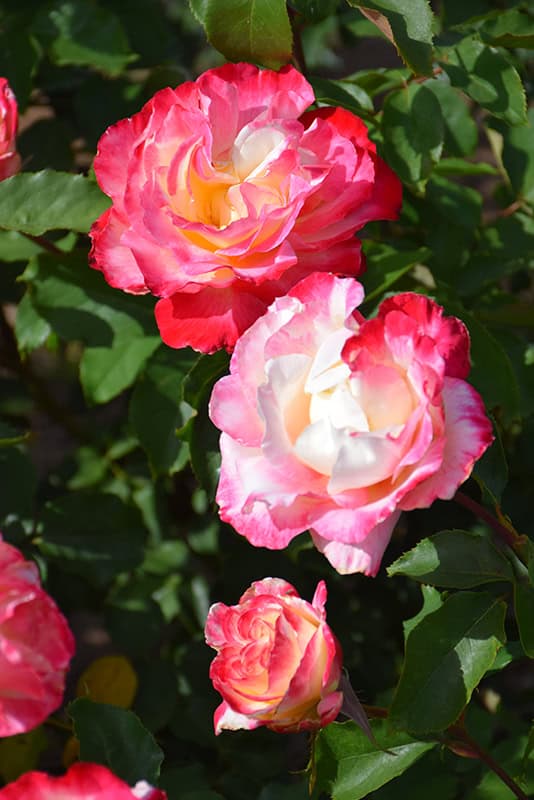
Hybrid Tea Roses
Hybrid tea roses, like Double Delight pictured to the left have large, many petalled, single or double flowers. Flowers are usually alone, although occasionally can be found in clusters of three. They come in several colours. Blooms are usually held singly on straight long stems making them ideal for cut flowers. Many are fragrant. Hybrid tea roses are always grafted. They vary in size depending on variety. Hybrid teas are best used in formal rose beds.
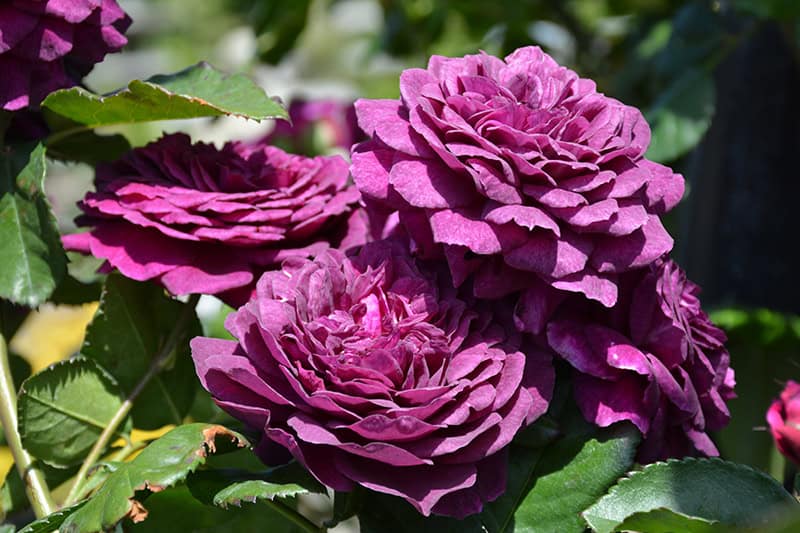
Floribunda Roses
My father always called these roses ‘lotsa littles’ because they flower profusely, but the flowers are on the smaller side like Ebb Tide pictured to the left. Blooms range from singles to fully double and are produced in clusters. The blooming period is usually maintained throughout the growing season. Although the flowers are smaller than Hybrid Teas, Floribundas tend to be hardier. Floribundas are usually grafted. Very showy when mass-planted in beds. Also work well in foundation planting.
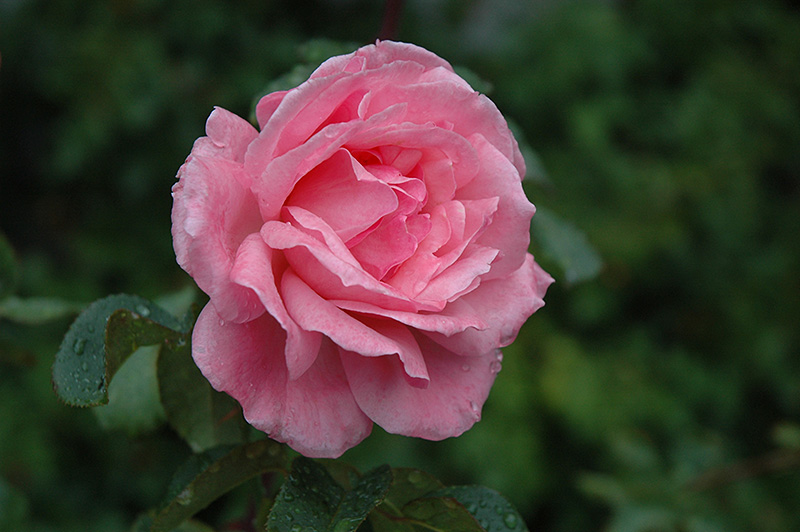
Grandiflora Roses
Like the Floribunda rose, my father had a nickname for Grandifloras. He called them ‘less and large’. This is because although Grandifloras produce fewer flowers than Floribundas, they have the largest and showiest blooms, like the Queen Elizabeth rose pictured to the left. These flowers are large like the Hybrid Teas, but can be produced in clusters like the Floribundas. They are vigorous growers and some varieties can get very tall. Grandifloras are always grafted. Taller varieties are very useful as hedges or backdrops in landscapes. Lower growing varieties are ideal for mixing in with perennial borders.
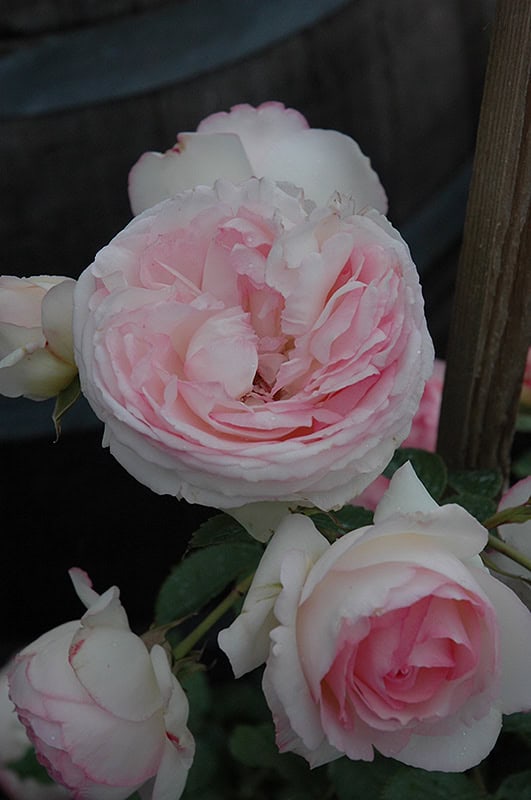
Climbing Roses
Climbers are sports or mutations of bush roses. The flowers can be single or double, of Hybrid Tea or Floribunda type, depending on parentage. Blooms come in several different colours depending on variety. Blaze rose, pictured to the left, is one of our most popular red climbers. Main shoots of the plant should be trained as horizontally as possible on the support to produce lateral branches. These lateral branches will grow upward from the main shoots to provide height and cover and it is on these lateral branches the flowers will be produced. Climbing roses are ideal to cover a trellis, arbour or other support.
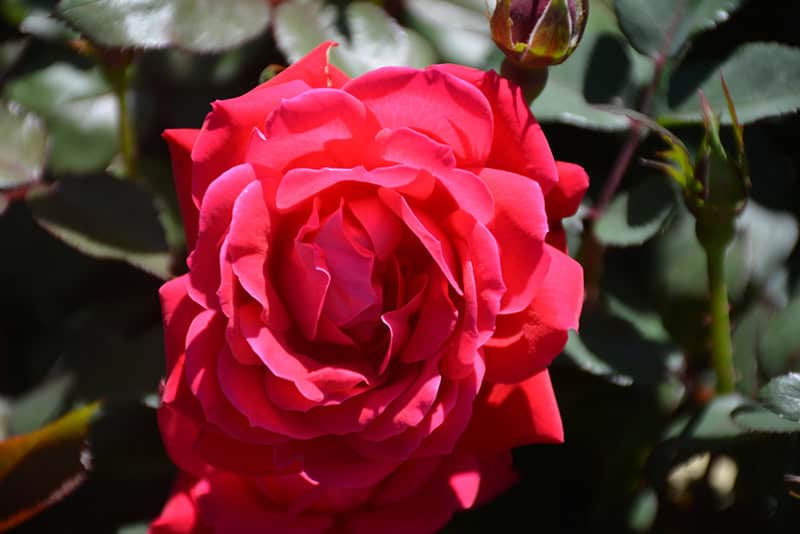
Shrub Roses
Shrub roses are greatly under-valued and under-used, like the Double Knock Out Rose pictured to the left. Modern shrub roses are derived in some cases from native roses that are free of disease and insect problems. They are extremely hardy and generally require no special care. Some are very neat and tidy like a Floribunda, with flowers as large as a Hybrid Tea and many varieties are fragrant. Include shrub roses in a border with spring flowering plants such as lilac and forsythia. Ideal as an informal flowering hedge or privacy screen. Some varieties add fall and winter interest with their bright red fruits.
